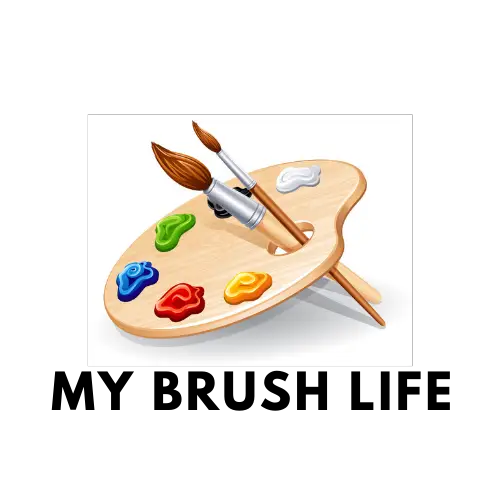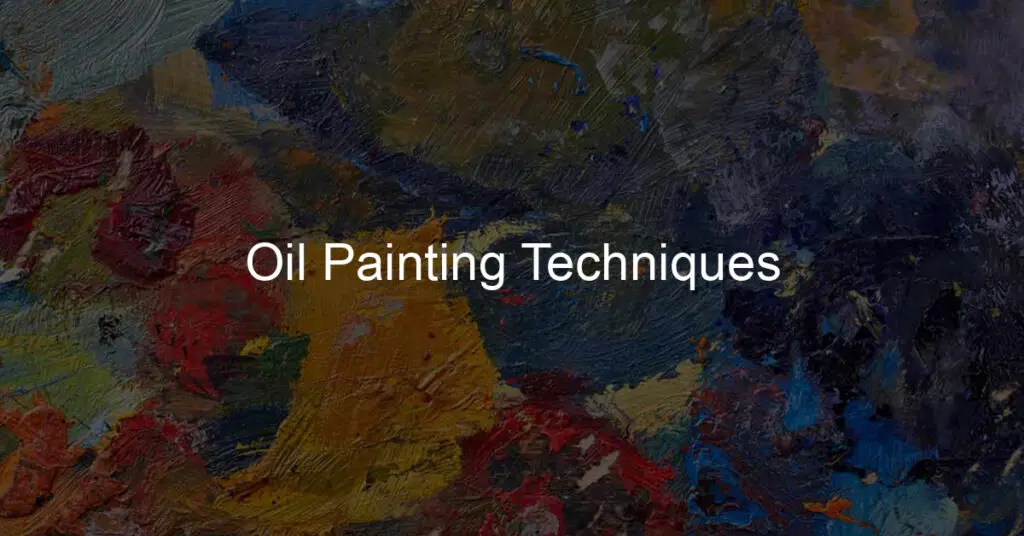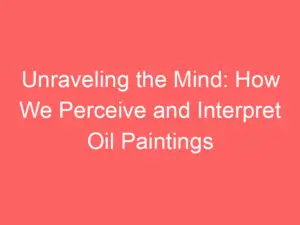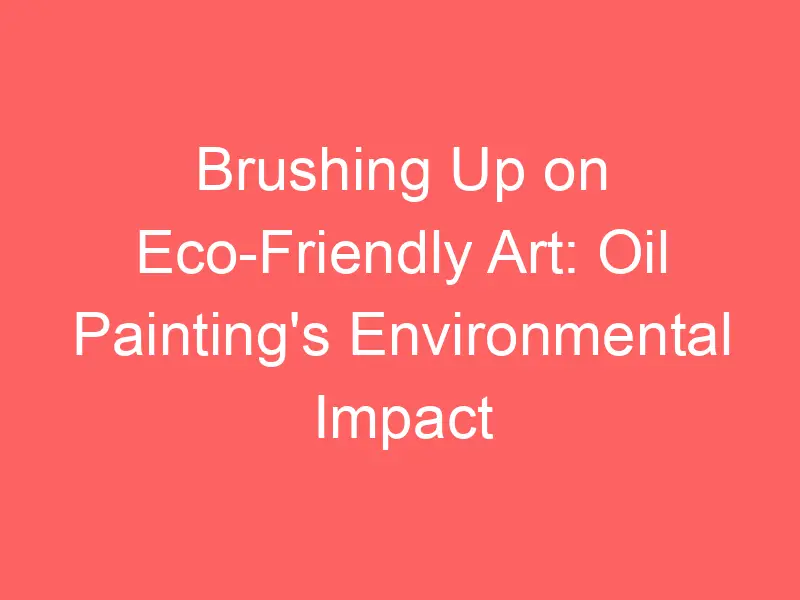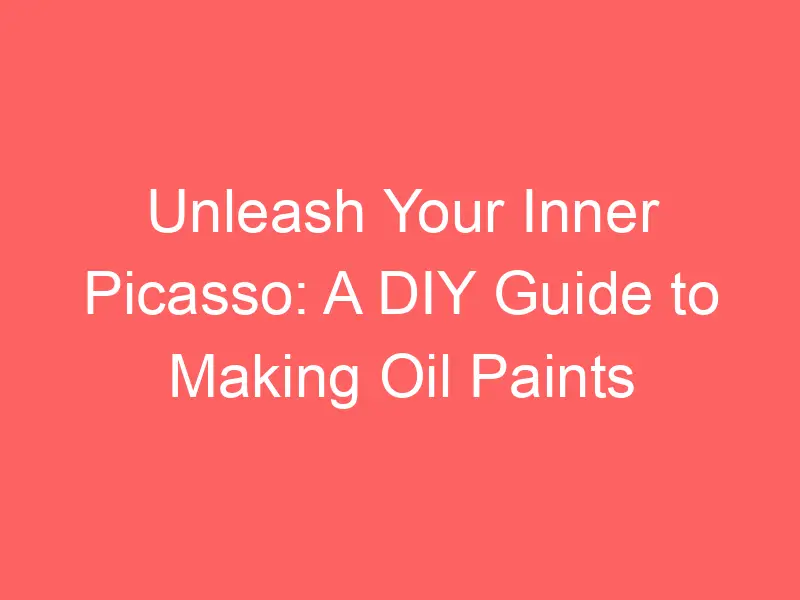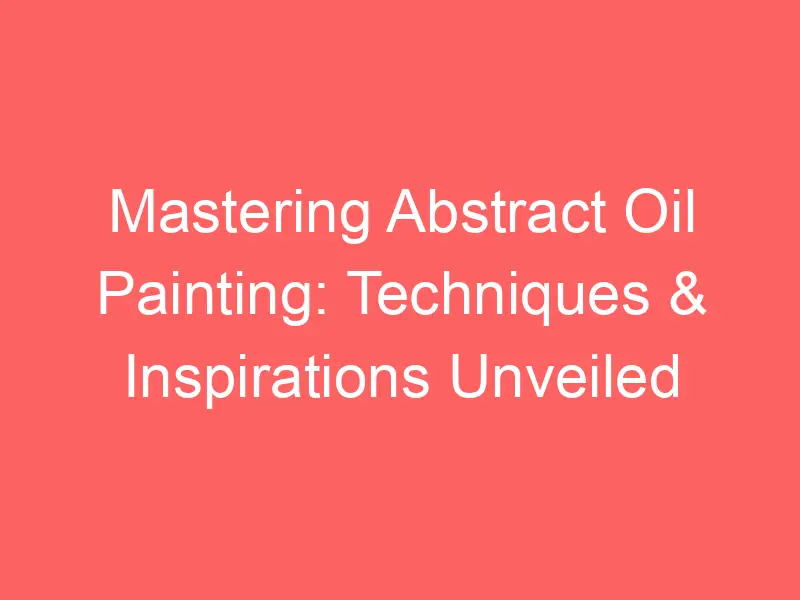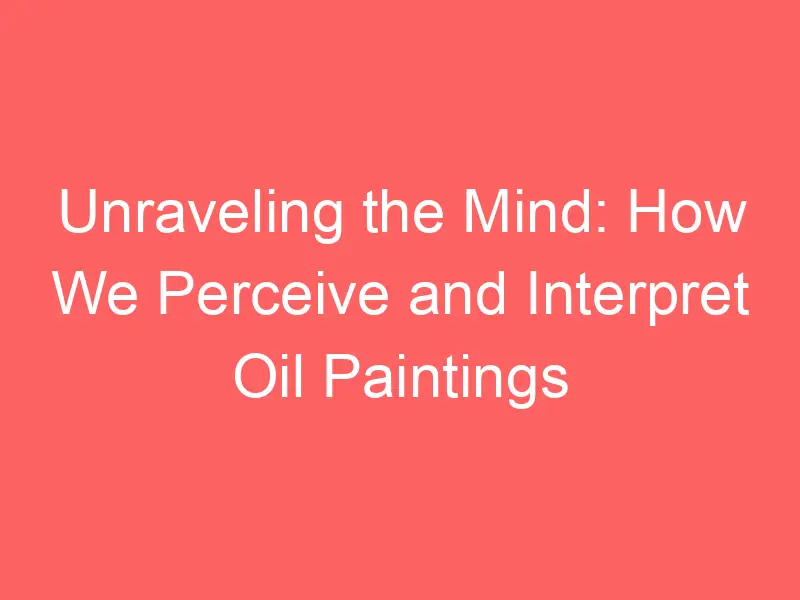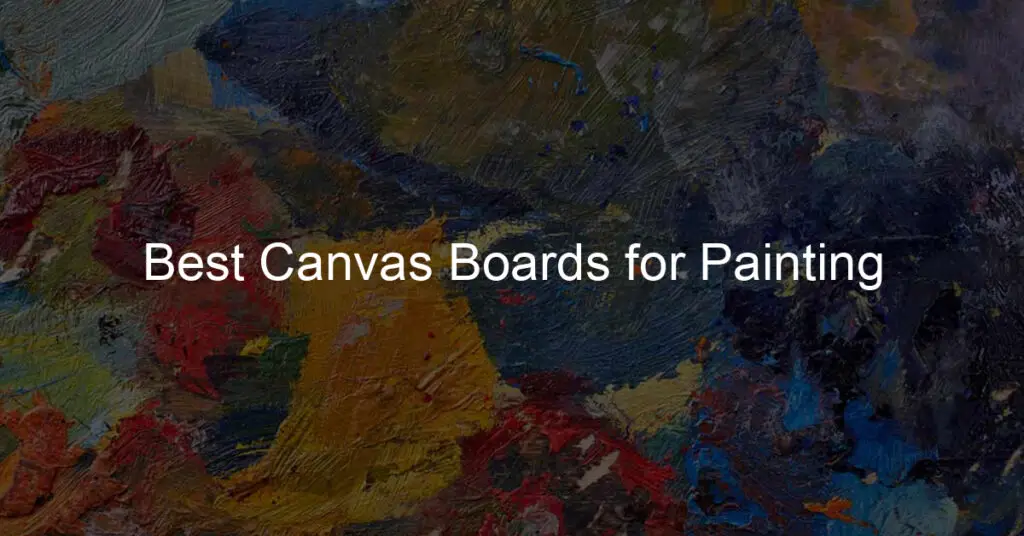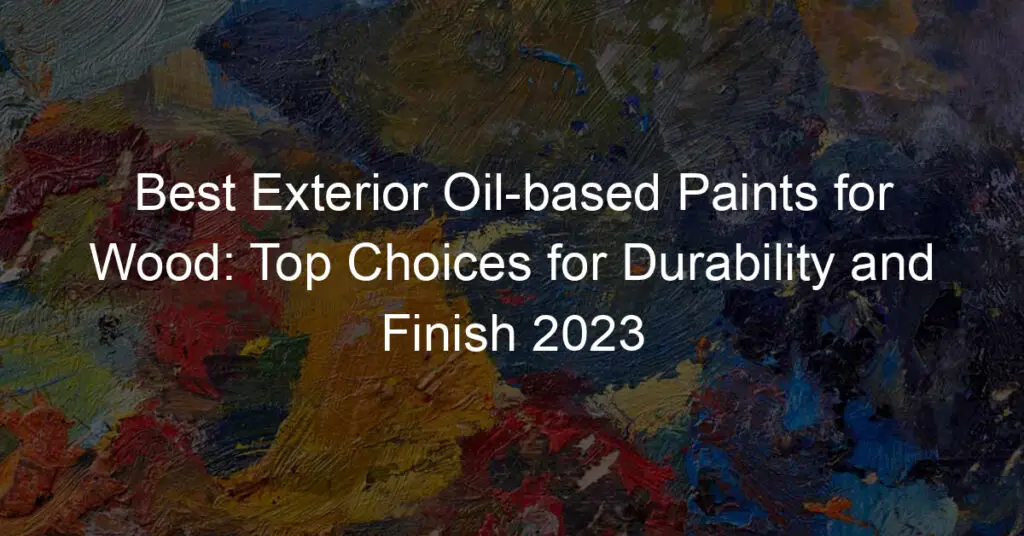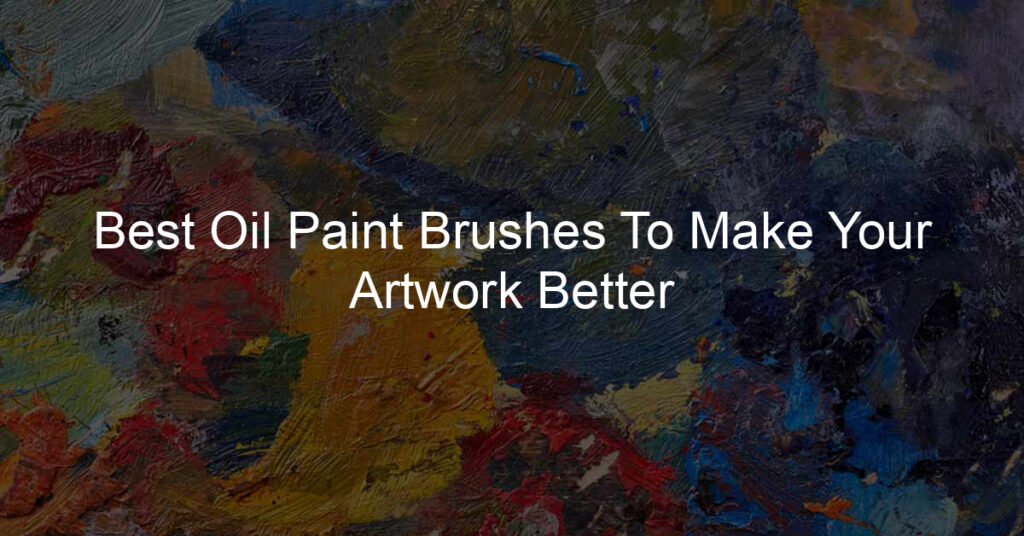Introduction to Oil Painting
Welcome to the colorful world of oil painting! Whether you’re a budding artist or just curious about this form of art, we’re here to guide you through its basics and history. So, let’s dive in!
- Understanding the basics of oil painting
- Exploring the history and evolution of oil painting
Now that we’ve covered the basics and history of oil painting, we’re ready to dive deeper. Stay tuned for our next sections where we’ll guide beginners through their first steps in oil painting, and offer lessons for those at an intermediate level. For the pros out there, we’ve got advanced techniques to take your art to the next level. Let’s embark on this colorful journey together!
Oil Painting for Beginners
Welcome to the world of oil painting! This art form might seem a bit intimidating at first, but don’t worry. We’re here to guide you through the basics and help you get started. So, let’s dive in!
Getting Started with Oil Painting
Starting with oil painting involves a few essential steps. Let’s break them down one by one.
- Choosing the right oil painting materials
- Setting up your workspace
- Understanding color theory and mixing
And there you have it! These are the first steps to getting started with oil painting. Remember, practice makes perfect, so don’t be discouraged if your first few attempts don’t turn out exactly as you’d hoped. Keep trying, keep learning, and most importantly, keep having fun!
Basic Oil Painting Techniques
Let’s dive into the world of oil painting! Here are some basic techniques that every beginner should know.
- Grasping the concept of underpaintingUnderpainting is like the first layer of your painting. It’s a monochrome version of the final painting that helps to define color values and shapes. It’s kind of like a blueprint! You start with a thin layer of paint, usually a single color, and then build up the colors and details on top. This technique gives your painting depth and a rich color base. Learn more about underpainting here.
- Mastering the art of glazingGlazing is a cool technique where you apply a thin, transparent layer of paint over a dry layer. This can create a beautiful, luminous effect and can really make your painting pop! It’s like adding a glossy finish to a photo. The key to mastering glazing is patience, as each layer needs to be completely dry before adding the next. Find out more about glazing here.
- Exploring the technique of impastoImpasto is a technique used in painting, where paint is laid on an area of the surface very thickly, usually thick enough that the brush or painting-knife strokes are visible. It can add a lot of texture and make your painting look 3D. It’s like frosting a cake – the more frosting, the more delicious it looks! Discover more about impasto here.
Remember, practice makes perfect. So, don’t be afraid to experiment with these techniques. Happy painting!
Intermediate Oil Painting Lessons
Ready to take your oil painting skills to the next level? You’re in the right place! In this section, we’ll dive into some intermediate lessons that will help you develop your skills further. Let’s get started!
Developing Your Skills
As an intermediate oil painter, it’s time to refine your techniques and explore new styles. Here are some areas to focus on:
- Enhancing your brushwork
- Working with mediums and varnishes
- Exploring different oil painting styles
Remember, the journey of oil painting is a marathon, not a sprint. Take your time, enjoy the process, and most importantly, have fun!
Oil Painting Tutorials
Ready to take your oil painting skills to the next level? We’ve got some fun and exciting tutorials for you! Let’s dive right in.
- Creating a Still Life PaintingStill life paintings are a great way to practice your skills. They allow you to focus on shape, color, and light. You can start with simple objects like fruits or vases. Here’s a step-by-step guide to help you create your own masterpiece:
- Choose your subject and arrange it in a way that pleases your eye.
- Sketch the basic shapes of your subject on the canvas.
- Start painting, focusing on the larger shapes first, then move on to the smaller details.
- Remember to take your time and enjoy the process!
- Painting a LandscapeLandscape painting can be a bit more challenging, but the results are definitely worth it. Here’s how you can paint your own beautiful landscape:
- Choose a landscape that you find inspiring. It could be a place you’ve visited or a photo you like.
- Sketch the main elements of the landscape on your canvas.
- Start painting, beginning with the background and working your way to the foreground.
- Don’t forget to add details like trees, buildings, or people to make your painting more interesting.
- Portraying the Human FigurePainting the human figure can be a bit tricky, but with practice, you can master it. Here’s a simple guide to get you started:
- Choose a model or a photo of a person you want to paint.
- Sketch the basic shapes of the human figure on your canvas.
- Start painting, focusing on the larger shapes first, then move on to the smaller details.
- Remember, it’s okay if your painting doesn’t look perfect. The most important thing is to have fun and learn!
Remember, practice makes perfect. So, grab your brushes and start painting!
Advanced Oil Painting Techniques
Ready to take your oil painting skills to the next level? You’re in the right place! Let’s dive into some advanced techniques that can help you master the art of oil painting.
Mastering Oil Painting Techniques
Mastering oil painting is a journey of exploration and experimentation. It’s about finding your unique style and expressing it through your artwork. Here are three key techniques to help you on your journey:
- Experimenting with texture and form
- Exploring the use of light and shadow
- Developing your unique artistic style
Mastering these techniques will not only improve your oil painting skills but also help you create artwork that is uniquely yours. So, grab your brushes and start experimenting!
Oil Painting Tips and Tricks
Hey there, fellow artists! We’ve got some super handy tips and tricks to help you make your oil paintings even more amazing. Let’s dive right in!
- Keeping your colors vibrant
- Maintaining your oil painting tools
- Overcoming common challenges in oil painting
So there you have it, some cool tips and tricks to help you on your oil painting journey. Remember, every artist has their own unique style and techniques. So don’t be afraid to experiment and find what works best for you. Happy painting!
Conclusion: The Journey of Oil Painting
As we wrap up our exploration of oil painting, it’s important to remember that this art form is a journey, not a destination. Whether you’re a beginner just starting out or an experienced artist looking to refine your skills, there’s always something new to learn and discover.
- Reflecting on the process of mastering oil painting techniques
- Continuing your learning journey in oil painting
